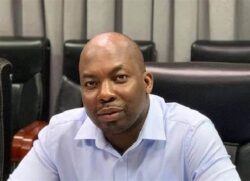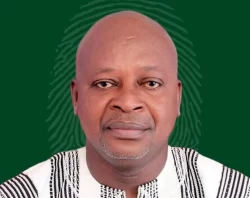Fifty years ago, a US president closed the gold window, ended capital controls, and launched a new era of globalized finance. The “Nixon Shock” reshaped the international monetary system overnight, and then gradually changed the status of central bankers. Instead of acting as servants of the domestic economy, monetary policymakers have become masters of the globalized and financialized world economy. And this development bears directly on our ability to tackle the problems of climate change and biodiversity loss.
Despite their technocratic mystique, central bankers are politically appointed public servants on government payrolls, and still derive their authority from the taxpayers in their respective jurisdictions. As former Bank of England deputy governor Paul Tucker observes, “the right to create money is always latently a power of taxation.”
Central bankers’ status and constitutional role is therefore primarily a democratic question, not an economic or technical one. As the managers of public institutions that hold a monopoly over the issuance of currencies and liquidity, they wield awesome, powerful instruments that can be deployed only because they are backed by government treasuries.
Treasuries, in turn, are backed by a country’s fiscal resources – including tax revenues – and by public institutions that are vital to the private financial sector, such as the contract-enforcing judicial system. The stronger a sovereign’s public institutions and tax base, the more expansive the central bank’s powers to generate liquidity, and the more highly rated the country’s bonds and currency will be.
Despite the long-reigning ideology of “free markets,” capitalism has always depended on public institutions and resources for its capital gains and profits, just as central banks have always presided over a hybrid private-public financial system. What is new is the extent to which central-bank resources (balance sheets) have been expanded and deployed in the private interests of vast, unregulated, and systemically risky capital markets across the “shadow-banking” system.
Outlining the history of these developments, the political economist Benjamin Braun notes that “the stagflation crisis of the 1970s and [former US Federal Reserve chair] Paul Volcker’s labour-crushing crackdown on inflation in the US in the early 1980s” led to the transfer of responsibility for monetary policy away from those directly accountable to elected representatives. Ever since then, Braun argues, financialized capital has depended on “independent” central banks and arbitration courts to protect it “against local democracy.”
Meanwhile, the Bank for International Settlements has tallied up the value of the extraordinary fiscal, monetary, and macroprudential measures that central banks have deployed since 2007 to shore up private financial markets and mitigate their adverse economic impacts. Notably, BIS economists find that central-bank programs to purchase private assets accounted for half of total purchases over this period. And as other researchers have shown, a significant share of these financial flows have gone to support fossil fuels and other carbon-intensive sectors.
The overall sums involved here are massive. Earlier this year, the Eurosystem’s balance sheet exceeded €7 trillion ($8.3 trillion), which is more than 60% of the eurozone’s GDP. The Bank of Japan’s balance sheet now stands at 130% of GDP. The Fed’s grew from $4.3 trillion in mid-March 2020 to a peak of $8.2 trillion in late July 2021. That is equivalent to about 40% of nominal US GDP, a level not seen since World War II.
Moreover, since 2007, central bankers have used their public authority to participate in, influence, and shape the vast $52 trillion shadow-banking system, where they have become private dealers of last resort, and market makers of first resort. The expansion of shadow banking follows from the 1981-2014 period, when 30 governments around the world decided to privatize their pension funds. As a result, a vast pool of the world’s savings flowed into asset-management funds in globalized, largely unregulated capital markets. Because the sums were too large to be accommodated by commercial “Main Street” banks, the shadow-banking system emerged.
These earlier political decisions to financialize the global economy are still with us, and will pose hurdles to our efforts to tackle broader societal challenges like climate change. Given the precarious state of the biosphere, it is imperative that central banks’ activities be reoriented toward what Braun calls “public purpose,” and away from the task of sustaining private gains in capital markets.
Humanity is now facing terrifying climate and ecological threats. While there is still a chance to slash greenhouse-gas emissions at the pace needed to keep global warming below 1.5° Celsius, biodiversity loss is already well underway. In fact, we are moving faster toward the point of civilizational collapse than scientists previously thought. In research published in the Proceedings of the National Academy of Sciences in June 2020, Gerardo Ceballos, Paul R. Ehrlich, and Peter H. Raven argued that “the ongoing sixth mass extinction may be the most serious environmental threat to the persistence of civilization, because it is irreversible.” (Emphasis added.)
Many, including key figures in US President Joe Biden’s administration, believe that ensuring the survival of human civilization is a task that can be left to private capital markets. In his first press conference as the US climate envoy, John Kerry paid homage to BlackRock’s climate-conscious CEO, Larry Fink, and in effect begged Wall Street to come to the rescue of the administration’s climate plan. The US national climate adviser, Gina McCarthy, then drove home the point: “The question won’t be whether the private sector is going to buy into it; the private sector is going to drive it.”
In the Great Depression, the face most Americans associated with the response was the democratically elected president, Franklin D. Roosevelt. Are we now supposed to look to an unelected, unaccountable fund manager – or, perhaps, to Fed Chair Jerome Powell – to rescue human civilization from collapse? The present structure of globalized finance lends itself to precisely this undemocratic outcome. But we must resist it, lest we end up with a return of fascism on top of the climate crisis.
If we are going to avert both a political and a climate breakdown, we will need to transform the international monetary system so that it upholds democracy and the policy autonomy of nation-states. That means reintroducing capital controls, re-regulating global banking, re-nationalizing pensions, and restoring political and economic power to elected assemblies – not simply to their executives and to central bankers.
To be sure, the separation of powers between central banks and politicians will have to be maintained to avoid corruption. But central bankers will need to be required, through legislation, to reorient their vast array of planning tools to the needs of democracy and the domestic economy.
Fifty years ago, a political decision by one elected president and his advisers transformed the international financial architecture overnight. Such democratic transformations are entirely possible, and another one is now urgently needed.
Ann Pettifor Director of Policy Research in Macroeconomics is the author of The Case for the Green New Deal. Copyright: Project Syndicate, 2021.
www.project-syndicate.org










